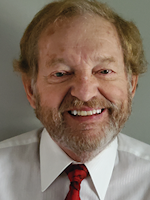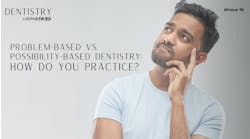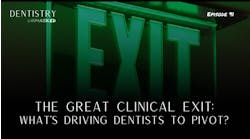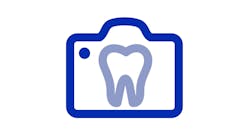In reality, dentists have only time to sell, so maximizing every day’s productivity—honoring the sacred now—is critical, as lost minutes can never be recouped. Generating appointments a week in advance is easy enough, but scheduling productive time within 24 hours can be difficult. Filling these too-frequent openings is crucial to achieving outstanding results. (My staff was fully aware and constantly reminded that open time on today’s schedule should be everyone’s top priority, stat! Don’t just keep busy, but directly attend to the most significant issue.)
Calling midday is a misery all its own, as few answer. Leaving a callback message places one at the patient’s mercy; while waiting for them to return the call, you dare not contact anyone else. How can a well-managed office minimize such desperate and inefficient efforts?
The innate unpopularity of this task restricted our outcome. (Being repeatedly told “no” threatens fragile self-esteem.) Also, every staff member had other essential daily activities to complete. To ameliorate this issue, we employed a short-call system that multiplied in size, and thus effectiveness, year after year as more people enrolled.
More by John A. Wilde:
- How dentists can join the “Millionaire’s Club”
- Getting off on the right foot: The new patient call slip
- Don’t refer pediatric patients: One dentist’s secret for young patients
We actuated our short-call system when scheduling recare appointments immediately after current treatment. (No patient should ever leave an office without scheduling an appointment or being otherwise accounted for in your practice’s system. Saying, “Call when you want to come in,” sets you up for disaster.) We advised select patients that if they chose, we would not preschedule them for a set day and time, but instead call to schedule with 24 hours’ or sometimes same-day notice, and in turn they would receive 10% off every charge that appointed day. We pledged that no matter what, we would see patients the month they were due, as one can’t compromise oral health for convenience or profit.
This offer was received enthusiastically by numerous patients excited by a bargain. The staff was thrilled by the ease and efficiency of filling time, and having a full schedule enhanced profit, which pleased me. Win, win, win!
The sine qua non of our system was a computer-generated calendar file containing a separate short-call folder for each month. Since multiple people were involved in scheduling, we only printed one copy of the calendar on the first day of each month. Being restricted to a single printout was essential to ensure the list was constantly updated, thus avoiding patients receiving multiple contacts from our office. When scheduled, we drew a line through that patient’s name, and notes such as “At pt request, please don’t contact again” or “Called 3 x with no answer. Try in the evening” were annotated on the form. Plenty of annoying, unnecessary calls exist without dentists adding to the misery.
Be discerning with patients you select
Staff must be discerning in selecting to whom they offer this discount. Readily available candidates consist primarily of stay-at-home or retired individuals, plus teachers and students during the summer months and extended holidays. Suggesting short calls to those who would like the savings but aren’t readily accessible clogs the system with nonviable entities and wastes time. Turning down two or more scheduling opportunities indicates that the individual is unsuited for this program; they’re then returned to the standard recare system.
Cajole, beg, or threaten; motivating staff is a perpetual problem. Because measured behavior improves, I instructed each front-office staff member plus everyone on the hygiene team (a total of six) to complete an average of five scheduling calls a day (unanswered calls didn’t count). Each person’s efforts were recorded and placed on my desk on the final day of each month. Once a month, our office sponsored a hygiene scheduling party in which five staff (we had five phone lines) made attempts for two hours, roughly from five to seven PM. I awarded cash prizes to the top two schedulers, provided supper for all involved, and each booked appointment provided an opportunity for the entire group to celebrate. Loudly! This event created an occasion for hygienists and dentists, who should be too busy to help during the working day, to participate. (If one feels it’s demeaning to do any job you expect from your staff, I quail at your fate, as you’ve chosen pride over prosperity.)
For 30 years, our office enjoyed an expanded hygiene system that featured two rooms, a chairside assistant, and one front office staff member dedicated to hygiene. This commitment allowed us to immediately increase patients seen daily from eight to 12, a 50% expansion without a significant rise in overhead. Several decades ago, this resulted in monthly hygiene profit routinely exceeding $10,000, which would be over $20,000 today. This non-dentist-produced revenue provided a comfortable basement for monthly production and, in some ways, became the engine driving our train as more hygiene examinations increased the diagnosis of other needed care. So, while maintaining hygiene’s more extensive schedule was challenging, high profitability made it a top priority.
Production-based compensation
Here is the key: believing people will work harder to receive greater rewards, I established compensation based on production for our hygiene team. This concept proved highly effective as they achieved an immediate 25% increase in productivity that never declined. (This is on top of the previous 50% bump from expanded hygiene.)
To determine a fair percentage of future recompense, I divided each person’s last year’s W2 pay by hygiene revenue. For example, if our hygienist’s salary was $60,000 and total production was $180,000, the percentage of production paid in future salary would be $60,000 / $180,000 = 33%. We made similar calculations for the other hygiene team members. Being aware that I would reward them for every dollar of increased productivity proved highly motivational. Also, coffee tastes better when one is being fully compensated while sipping. Killing time for an hour with no remuneration tends to ruin the taste.
Because salary was directly affected, self-motivated team members worked assiduously to fill every minute and personally confirmed each appointment. Our hygiene department became a tight-knit team whose financial futures were inextricably bound. All would stay after business hours to schedule and during the day willingly worked in additional procedures like taking study models, fabricating whitening trays, and placing sealants. Patients were pleased to avoid a separate office visit because of our accommodations, and staff and I were happy with the enhanced revenue.
My pay is directly related to my production. This seminal fact motivates me to be a diligent worker, particularly since I know overhead is only slightly reduced during unscheduled time. Wouldn’t it be a joy to be part of a team whose members were all as driven and exultant in mutual triumph? A crevasse yawns between those who wish for success and those willing to work for it. You’re the boss and now possess the know-how. Start working more intelligently, and make your dreams come true.
Editor's note: This article appeared in the May 2022 print edition of Dental Economics magazine. Dentists in North America are eligible for a complimentary print subscription. Sign up here.







